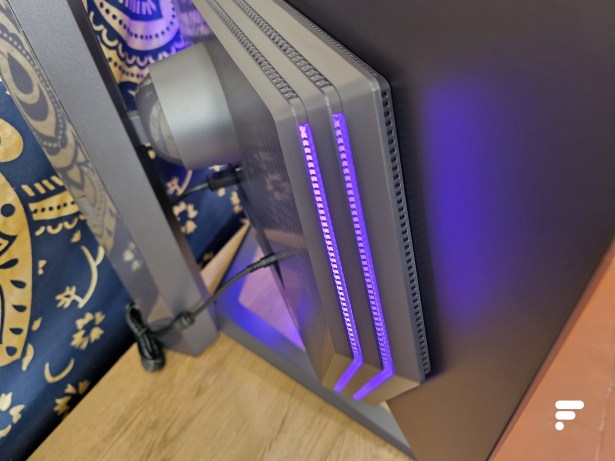OLED on 27 inches, in 1440p, with a refresh rate of 240 Hz! This is how to briefly summarize this new offer on the gaming screen market. With the promise of extremely low response time, ideal fluidity and an image with many qualities, LG is selling dreams to players and, casually, at a price that remains “in the nails” for such an innovation. .
They are there ! Smaller OLED panels are entering the gaming screen market. Until then, the slabs provided by LG Display have been confined to imposing diagonals, 42 inches and more. More recently, Samsung Display has come up with its QD-OLED alternative to produce new TVs, as well as gaming monitors. This is how a monitor like the Dell Alienware AW3423DW was born last year.
For 2023, LG is back on board with two major developments. First of all with an offer of flexible Oled screens that we were able to try with the Corsair Xeneon Flex, but above all in the production of screens on more classic diagonals, as is the case with the LG UltraGear 27GR95QE that we let’s test today, or the Asus PG27AQDM.
LG UltraGear 27GR95QE spec sheet
- Diagonal: 26.5 inches
- Curved: no
- Technology: OLED
- Definition: 2560 x 1440 pixels
- Refresh rate: 240 Hz
- Nvidia G-Sync and AMD FreeSync Premium
- HDR 10 certification
- Ports: HDMI 2.1 x 2, DisplayPort 1.4, USB 3.0 x 2, headphone out
- 604.4 x (464.4 – 574.4) x 258mm
The monitor was lent to us by LG for this test.
Design and ergonomics
Oled obliges, the slab of this screen is extremely thin while its borders are almost invisible. It’s clear that immersion is heightened with a setup like this. The block hosting the electronics is logically more imposing, but you hardly notice it when you are in front of the screen. It also accommodates two RGB strips that highlight the screen in the dark.

Source: Legouge Matthieu

Source: Legouge Matthieu

Source: Legouge Matthieu
The foot of the screen is faithful to what LG has been producing for some time. End too, it is quite classic, but perhaps lacks a little ballast to really guarantee us that the screen will not move during our various manipulations. There is another RGB lighting, below the screen, which illuminates the desk. Everything is of course adjustable via the OSD.

Source: Legouge Matthieu

Source: Legouge Matthieu
The ergonomic settings are quite classic, with an amplitude of 11 cm to adjust the height, a forward or backward tilt, rotation to the right or to the left and finally the possibility of switching from landscape mode to portrait mode. .
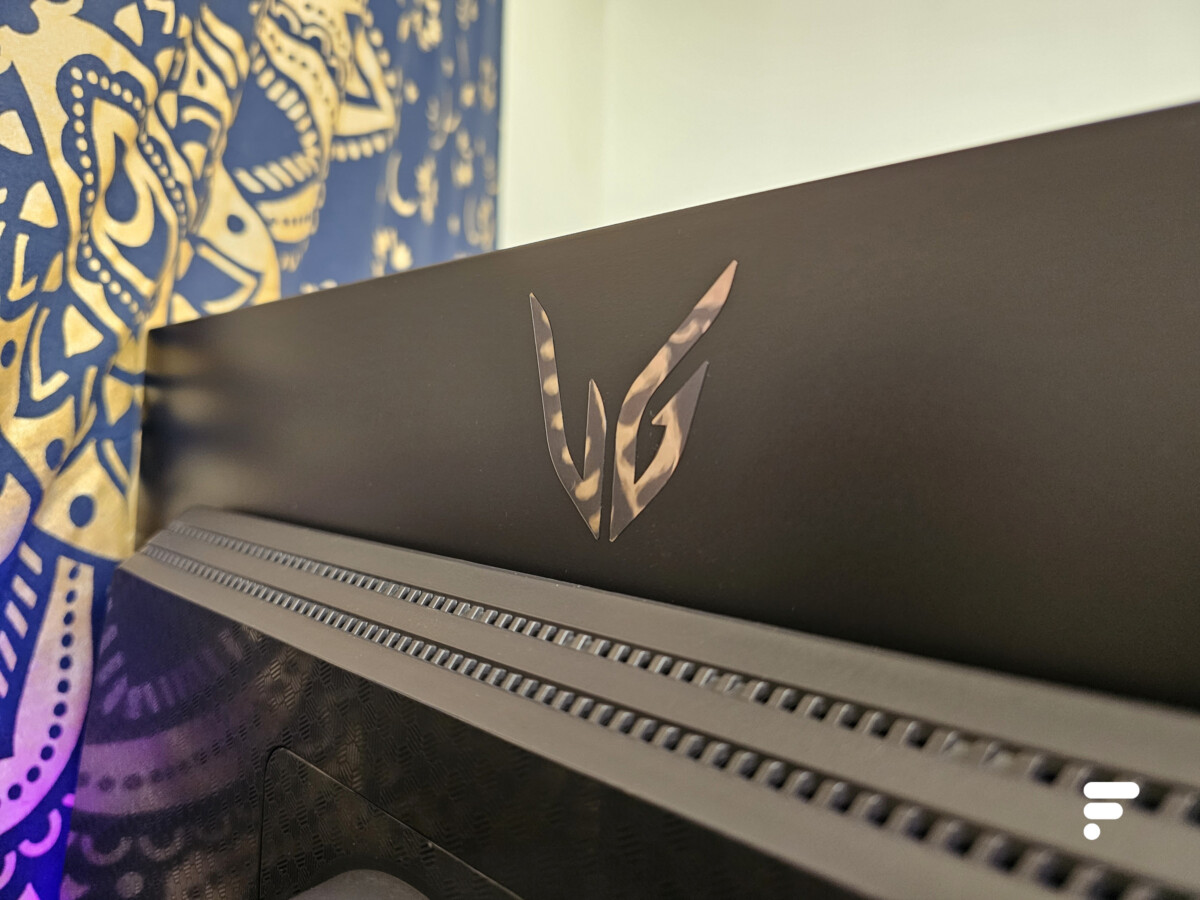
This monitor is also distinguished by the fact that it comes with a remote control, which is still rarely the case. Navigation within the interface is obviously still possible via a simple button (and not a joystick) placed under the screen, but the remote control makes things easier. LG has also taken care to develop a very pleasant interface that resembles the one found on these televisions.
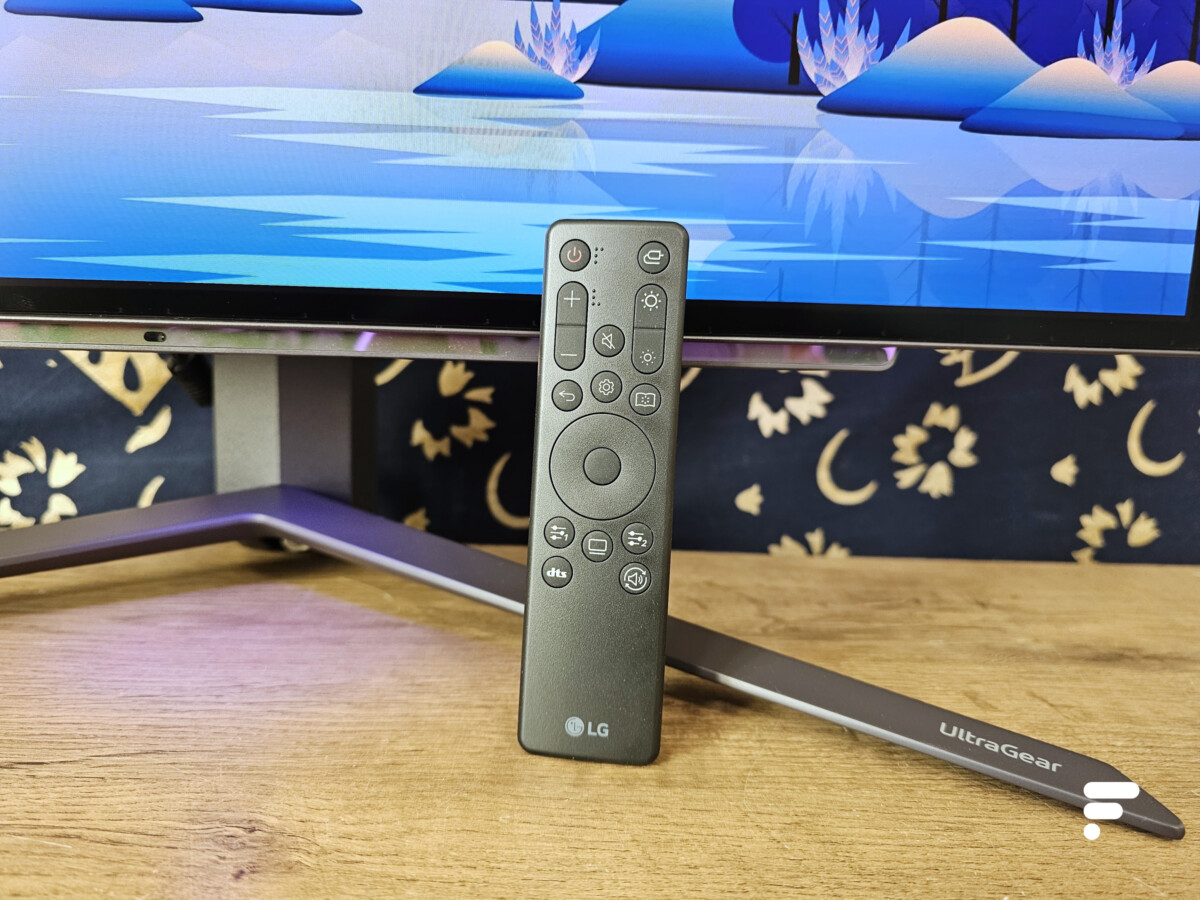
Connectors
The LG UltraGear 27GR95QE is adorned with two HDMI 2.1 connectors, console players can therefore use this screen to display a maximum of 120 Hz. On PC, it will of course be more appropriate to go through DisplayPort 1.4 in order to take advantage of the 240 Hz refresh offered by this panel. Inevitably, the QHD definition (2560 x 1440 pixels) requires a graphics card with a minimum of performance to take advantage of this refresh rate. From this side, our RTX 3080 FE seems perfectly cut out for the task. Finally, let’s not forget to mention the 2 USB 3.0 inputs and the headphone output. The latter will be essential in certain situations since the screen is not equipped with any loudspeaker.
Crazy fluidity
After more than two full weeks in the company of this monitor, we can safely say that the difference in performance is obvious compared to the LCD screens that we are used to testing. First of all, we must underline the pleasure of play provided by the Oled panel: the richness of the colors and the contrast help enormously with immersion. Whether you’re playing a contemplative game where the graphics are very elaborate or a competitive game, and even for consuming multimedia content, the image remains sublime in all circumstances.

However, it is the feeling of fluidity that is quite crazy. Even by limiting the refresh rate to 120 Hz, the impression of fluidity of scenes and moving objects is… better than on an LCD monitor with a refresh rate of 144 Hz, or even more! We can’t always get our graphics card to generate enough frames per second in some very demanding games with ray tracing, but it’s a real madness on PC in 240 Hz! On the question of fluidity, the finding is ultimately similar if we were to compare an LCD television and an Oled: the very short response times of the Oled largely prevail since they are very close to being instantaneous. Add to that the almost complete absence of artifacts like blooming and ghosting to further enhance the feeling of fluidity.
On the other hand, there is a big difference between this Oled monitor and a television that uses this same technology: the coating of the screen. The LG UltraGear 27GR95QE features a matte treatment and not a gloss or semi-gloss as is typically seen on other OLED displays. A logical choice for a monitor when reflections can quickly spoil a gaming session. slightly shallower blacks than a glossy OLED panel. Nevertheless, in our opinion, it is the right choice for a gaming screen, especially since the matte coating is very effective and leaves the possibility of playing comfortably even in a room bathed in light. We will of course avoid direct reflections, as we already do with any screen from the moment we want an optimal gaming experience.
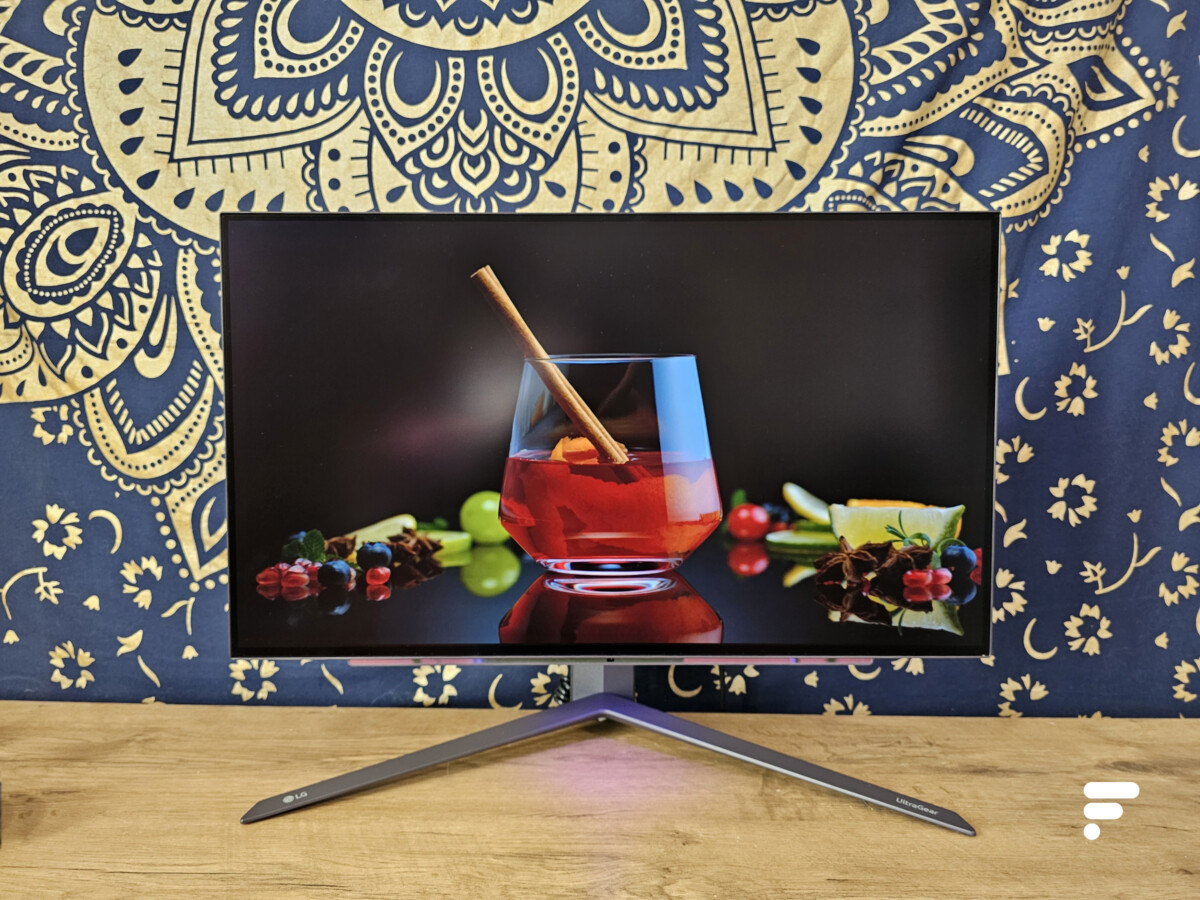
Image quality
LG provides us with a monitor whose different image modes are carefully calibrated for standard, office and multimedia use, as well as for different types of games. In SDR, Gamer 1 mode displays a color temperature that is a little too warm, nothing serious that said.

On-screen color reproduction is terrific. No chromatic drift in sight. Every nuance is respected. The only problem with SDR signals is brightness. We measure it at around 200 cd/m² in Gamer 1 mode. It nevertheless goes up to 400 cd/m² with Vivid mode.
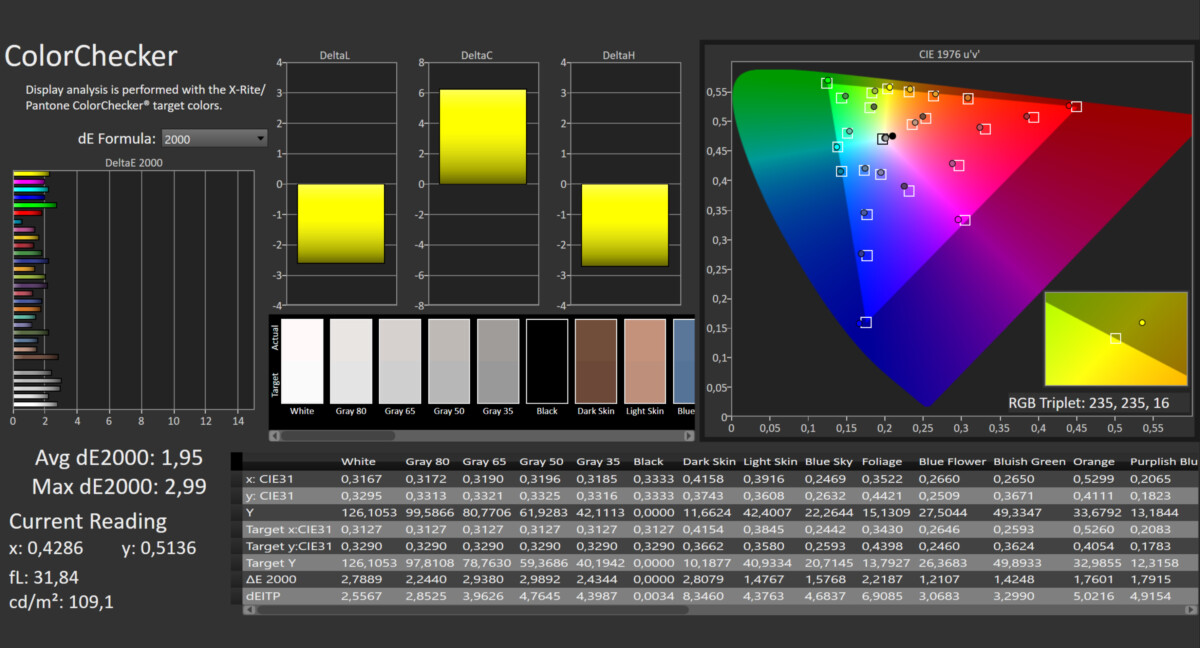
However, it is much better with HDR signals. First, because there is no mode dedicated to HDR strictly speaking, this means that you can find the settings for each image mode after activating HDR. Once again, the Vivid mode offers the best brightness with 688 cd/m². The colorimetric accuracy is however a little less good with an average Delta E of 3.86 and some chromatic drifts. On smaller windows, with sizes of 1 and 2%, we obtain a luminous peak of 800 cd/m², a nice performance which allows to bring out a maximum of detail in the highlights. Gamer 1 mode, still in HDR, is slightly less efficient in terms of brightness with a peak of around 600 cd / m², on the other hand the color fidelity is there with an average Delta E of 2.24.
Power consumption
Like most Oled screens, the UltraGear 27GR95QE has above-average power consumption. With our usual protocol which consists in raising the consumption by diffusing a white pattern of 10% with a luminosity of 150 cd/m², we calculate a relative consumption of approximately 134 W/cm².
LG UltraGear 27GR95QE price and availability
The LG UltraGear 27GR95QE is currently available in stores for the tidy sum of €1,099. It is certainly high for a 27-inch monitor, prices will undoubtedly come down in the years to come for Oled monitors. In the meantime, this UltraGear screen remains a little less expensive than its main competitor. This is the Asus ROG Swift PG27AQDM, marketed at around €1,200.
